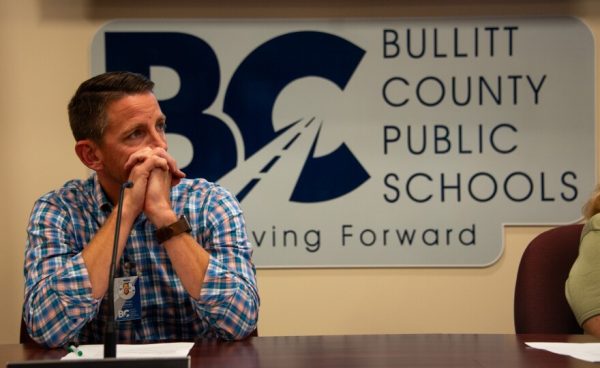An Inside Look at the New KDE Standards
The Kentucky Department of Education (KDE) sets new standards for this year’s classrooms.
The exemplary text puts teachers under the impression of what they can and cannot teach in their classroom.
The Kentucky Board of Education (KBE) created a new way to revise and create new standards in 2017-2018. A lack of communication has caused various misunderstanding for what the new standards actually mean. When determining if a piece of literature is “grade-appropriate” KDE uses three to four resources to completely determine its complexity.
Starting in 2017-2018 the KBE implemented a process to review Kentucky’s academic standards every six years in order to revise and replace certain standards that may no longer be relevant in today’s classroom. The english/language arts standards and development committee is composed of six teachers, three public post-secondary professors and one community member. Their function is to review the work and findings of the advisory panel and make recommendations to revise or replace existing standards. Anyone can apply to be apart of the committee but only a few are selected based on their expertise in the areas as well as being a practicing teacher in English/ language arts.
The new KDE revised academic standards for reading and writing has left many teachers infuriated when they received a new list of what they thought were the only books they could use in their classroom. Teachers throughout the english department received a two-page exemplare text that created a huge chain of miscommunication throughout the school. When the board of education presented this new list they created the idea that those are the only books teachers may use in their classroom when in fact it is only a guide to show the level of complexity they should be teaching students. The Kentucky Academic standards state, “The standards address what is to be learned but do not address how learning experiences are to be designed or what resources should be used,” therefore teachers may use any literature of their choosing as long as it matches the complexity required for that particular grade and allow students to reach the end goal for that year.
K-12 standards for reading define what students should understand and be able to do by the end of each grade. In order to meet these expectations students must read from a range of high quality, increasingly challenging, literary and informational text. As well as text from diverse cultures, time periods, and disciplines, including all content areas. Each form of literature should remain “grade-level appropriate” and complex. The way to determine in a novel or story is “grade-level appropriate” is by using Lexile and Flesch-Kincaid, tier two and three vocabulary in context and subject-knowledge requirements.
For more information about the new KDE standards paired with an interview from English teachers at Bullitt East look for the podcast “Not Too Deep with Abi and Morgan” coming soon.






